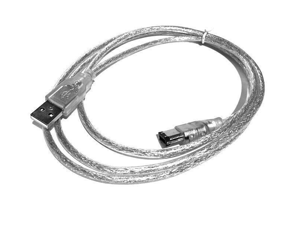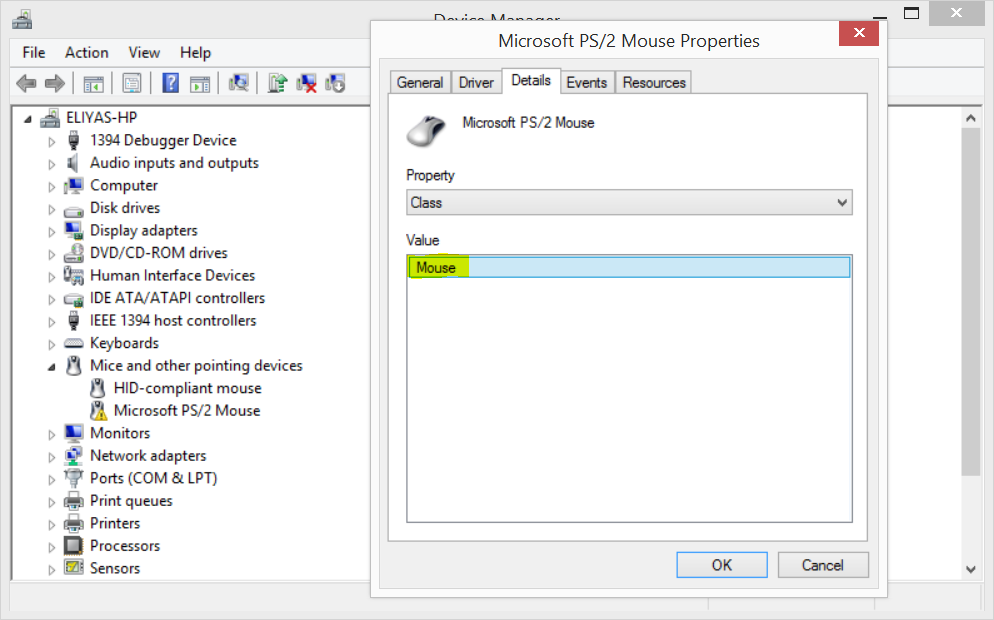Adaptec was founded by Larry Boucher in 1981. At first, Adaptec focused on devices with SCSI interfaces. On May 10, 2010, PMC-Sierra, Inc. And Adaptec, Inc. Announced they had entered into a definitive agreement of PMC-Sierra acquiring Adaptec's channel storage business on May 8, 2010, which included Adaptec's RAID storage product line, the Adaptec brand, a global value added reseller customer.
- Wi-Fi Spectral Bands: 2.4 GHz/5 GHz Channel Utilization: 20/40/80 MHz MIMO Configuration: 2x2 (2-stream) Bracket: Full height and Half height Bracket.
- Reboot after the installation of the Unibrain 1394 drivers and then look at you Device Manager again to see where the new 1394 Bus Host Controller is located in the Device Manager; just you will know for future.
There are three kinds of WDM drivers: bus drivers, function drivers, and filter drivers.
- A bus driver drives an individual I/O bus device and provides per-slot functionality that is device-independent. Bus drivers also detect and report child devices that are connected to the bus.
- A function driver drives an individual device.
- A filter driver filters I/O requests for a device, a class of devices, or a bus.
In this context, a bus is any device to which other physical, logical, or virtual devices are attached; a bus includes traditional buses such as SCSI and PCI, as well as parallel ports, serial ports, and i8042 ports.
It is important for driver developers to understand the different kinds of WDM drivers and to know which kind of driver they are writing. For example, whether a driver handles each Plug and Play IRP and how to handle such IRPs depends on what kind of driver is being written (bus driver, function driver, or filter driver).
The following figure shows the relationship between the bus driver, function driver, and filter drivers for a device.
Each device typically has a bus driver for the parent I/O bus, a function driver for the device, and zero or more filter drivers for the device. A driver design that requires many filter drivers does not yield optimal performance.
The drivers in the previous figure are the following:
A bus driver services a bus controller, adapter, or bridge. Bus drivers are required drivers; there is one bus driver for each type of bus on a machine. Microsoft provides bus drivers for most common buses. IHVs and OEMs can provide other bus drivers.
A bus filter driver typically adds value to a bus and is supplied by Microsoft or a system OEM. There can be any number of bus filter drivers for a bus.
Lower-level filter drivers typically modify the behavior of device hardware. They are optional and are typically supplied by IHVs. There can be any number of lower-level filter drivers for a device.
A function driver is the main driver for a device. A function driver is typically written by the device vendor and is required (unless the device is being used in raw mode).
Upper-level filter drivers typically provide added-value features for a device. They are optional and are typically provided by IHVs.
The following topics describe the three general types of WDM drivers—bus drivers, function drivers, filter drivers—in detail. Also included is an example of WDM driver layering that uses sample USB drivers.
Download Firewire 1394 Driver Windows 7
In this section
-->Windows 7 includes 1394ohci.sys, a new IEEE 1394 bus driver that supports faster speeds and alternative media as defined in the IEEE-1394b specification. The 1394ohci.sys bus driver is a single (monolithic) device driver, implemented by using the kernel-mode driver framework (KMDF). The legacy 1394 bus driver (available in earlier versions of Windows) includes multiple device drivers that were implemented by using the Windows Driver Model (WDM) in a port/miniport configuration. The 1394ohci.sys bus driver replaces the legacy port driver, 1394bus.sys, and the primary miniport driver, ochi1394.sys.
The new 1394ohci.sys bus driver is fully backward compatible with the legacy bus driver. This topic describes some of the known differences in behavior between the new and the legacy 1394 bus driver.

Note Patriot driver download for windows 10 64-bit.
Firewire 1394 Legacy Driver
The 1394ohci.sys driver is a system driver that is included in Windows. It is automatically loaded when you install a 1394 controller. This is not a redistributable driver that you can download separately.
If a multifunction PCI device conforms completely to the PCI multifunction standard, the PCI bus driver enumerates the individual functions. The PCI bus driver manages the fact that there is more than one function residing at a single device location. To the rest of the system, the individual functions operate like independent devices. Multi-function Devices An MFP ( M ulti F unction P roduct/ P rinter/ P eripheral), multifunctional, all-in-one (AIO), or Multifunction Device (MFD), is an office machine which incorporates the functionality of multiple devices in one, so as to have a smaller footprint in a home or small business setting (the SOHO market segment), or to. Option multifunction devices driver touchpad. Multifunction Device free download. Get the latest version now. Multifunction Device. The Exchange server would relay messages in the same way that a device would use Microsoft 365 or Office 365 to relay messages using Option 3 below. You can find out more about configuring your own email server to send emails to Microsoft 365 or Office 365 here: Set up connectors to route mail between Microsoft 365 or Office 365 and your own.
I/O Request Completion
All I/O requests that are sent to the new 1394 bus driver return STATUS_PENDING because the 1394ohci.sys bus driver is implemented by using KMDF instead of WDM. This behavior differs from that of the legacy 1394 bus driver, in which certain I/O requests complete immediately.
A client driver must wait until I/O requests sent to the new 1394 bus driver are complete. You can provide an I/O completion routine that is called after the request is complete. The status of the completed I/O request is in the IRP.
Configuration ROM Retrieval
The new 1394 bus driver tries to use asynchronous block transactions at faster bus speeds to retrieve the contents of a node's configuration ROM. The legacy 1394 bus driver uses asynchronous quadlet reads at S100 speed—or 100 megabits per second (Mbps). The 1394ohci.sys bus driver also uses the values that are specified in generation and max_rom entries of the node's configuration ROM header to improve the retrieval of the remaining content of the configuration ROM. For more information about how the new 1394 bus driver retrieves the contents of a node's configuration ROM, see Retrieving the Contents of a IEEE 1394 Node's Configuration ROM.
IEEE-1394-1995 PHY Support
Via 1394 Driver
The 1394ohci.sys bus driver requires a physical layer (PHY) that supports IEEE-1394a or IEEE-1394b. It does not support a PHY that supports IEEE-1394-1995. This requirement is due to the 1394ohci.sys bus driver's exclusive use of short (arbitrated) bus resets.

NODE_DEVICE_EXTENSION Structure Usage
A client driver can reference the device extension in the 1394 bus driver associated with the physical device object (PDO) for the device that the client driver controls. This device extension is described by the NODE_DEVICE_EXTENSION structure. In 1394ohci.sys, this structure remains at the same location as in the legacy 1394 bus driver, but the nonstatic members of the structure might not be valid. When a client driver uses the new 1394 bus driver, they must make sure that the data accessed in NODE_DEVICE_EXTENSION is valid. The static members of NODE_DEVICE_EXTENSION that contain valid data are Tag, DeviceObject, and PortDeviceObject. All other members NODE_DEVICE_EXTENSION are nonstatic, which the client driver must not reference.
Gap Count Optimization
The default behavior of the 1394ohci.sys bus driver is to optimize the gap count when it finds only IEEE 1394a devices on the 1394 bus, excluding the local node. For example, if the system that is running 1394ohci.sys has a host controller that complies with IEEE 1394b but all devices on the bus comply with IEEE 1394a, then the new 1394 bus driver tries to optimize the gap count.
Gap count optimization occurs only if the 1394ohci.sys bus driver determines that the local node is the bus manager.
The 1394ohci.sys bus driver determines whether a device complies with IEEE-1394a by the speed setting in the node's self-id packet. If a node sets both of the bits in the speed (sp) field in the self-id packet, then 1394ohci.sys considers the node to comply with IEEE-1394b. If the speed field contains any other value, then 1394ohci.sys considers the node to comply with IEEE-1394a. The gap count value that is used is based on table E-1 in the IEEE-1394a specification, which provides the gap count as a function of hops. The 1394ohci.sys bus driver does not compute the gap count. You can change the default gap count behavior by using a registry value. For more information, see Modifying the Default Behavior of the IEEE 1394 Bus Driver.
1394 Driver Legacy
Device Driver Interface (DDI) Changes

In Windows 7, the 1394 DDIs were changed to support faster speeds as defined by the 1394b specification and improved to simplify the development of 1394 client drivers. For more information about the general DDI changes that the new 1394 bus driver supports, see Device Driver Interface (DDI) Changes in Windows 7.
Related topics

The IEEE 1394 Driver Stack
Retrieving the Contents of a IEEE 1394 Node's Configuration ROM
